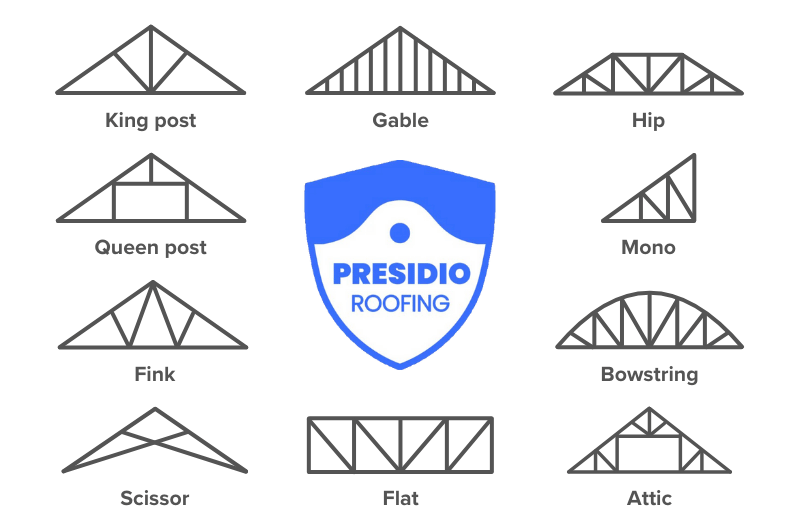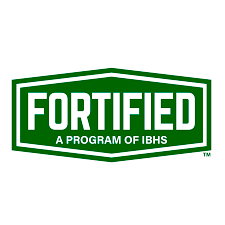
When it comes to building or fixing up a roof, most folks don’t give much thought to what’s holding it up—until something goes wrong. Roof trusses are that part of your home that quietly does the heavy lifting. Whether you’re trying to figure out what’s holding up your roof, or you’re planning a new build, understanding the types of trusses out there can save you a lot of time, money, and headaches.
In this guide, we’ll break down the most common types of roof trusses, what they’re good for, and how to figure out which one’s right for your home. Think of this as your go-to manual for decoding trusses, written in plain English—no contractor jargon here.
What Are Roof Trusses?
Roof trusses are like the skeleton of your roof—strong, sturdy, and designed to hold everything together. They’re pre-engineered structures made up of wood or metal, working together to distribute weight evenly across your home. Without them, your roof would sag faster.
The beauty of roof trusses is that they’re designed to do more with less. Instead of needing big, bulky beams, trusses use a series of smaller, interconnected pieces that work together to carry the load. This makes them lighter, cheaper, and easier to install than traditional framing methods.
Why does this matter to you? Because the type of truss you have—or choose—can impact everything from how your roof looks to how much storage space you’ve got in your attic.
Why Choosing the Right Roof Truss Matters
A truss might seem like a “one-size-fits-all” kind of deal, but that couldn’t be further from the truth.
If you’re in an area with heavy snow or high winds, you’ll want a truss designed to handle that kind of pressure. On the flip side, if you’re building a sleek, modern home with low slopes, a flat truss might be the way to go. And let’s not forget the aesthetic factor. Some trusses allow for vaulted ceilings or more attic space, which can completely change the look and feel of your home.
Your budget, local building codes, and even the materials you’re using for your roof will all play a part in this decision.
Common Roof Truss Types
When it comes to roof trusses, there’s a type for every home and every purpose. Think of them like tools in a toolbox—each one serves a specific job, and picking the wrong one can make things a whole lot harder. Let’s walk through the most common types of roof trusses and what they’re good for.
King Post Truss
The king post truss is as simple as it gets, with just one vertical post in the center holding everything together. It’s like the workhorse of the truss world—strong, reliable, and perfect for smaller spaces where you don’t need a lot of support.
Best For: Small homes, sheds, and garages.
Why it Works: It’s cost-effective and easy to install, making it a no-brainer for budget-conscious homeowners.
Queen Post Truss
Think of the queen post as the king post’s slightly fancier cousin. It has two vertical posts instead of one, giving it more strength and the ability to span wider areas.
Best For: Medium-sized homes or spaces where you need a bit more support.
Why it Works: It’s a great middle-ground option that balances strength and simplicity.
Fink Truss
This is the classic truss design you’ve probably seen a hundred times without realizing it. With its W-shaped webbing, the fink truss is all about spreading out the load evenly.
Best For: Most residential roofs, especially those with steeper pitches.
Why it Works: It’s versatile and strong, making it a go-to choice for many builders.
Scissor Truss
If you’re dreaming of vaulted ceilings, the scissor truss is your ticket. Its sloping interior beams create that open, airy look without sacrificing support.
Best For: Homes with cathedral or vaulted ceilings.
Why it Works: It adds height and character to your home while keeping things structurally sound.
Gable Truss
The gable truss is the bread-and-butter of roof design—simple, triangular, and effective. It forms the classic roof shape most people picture when they think of a house.
Best For: Standard residential roofs.
Why it Works: It’s straightforward, cost-effective, and gets the job done.
Hip Truss
If you live in a windy or rainy area, the hip truss might just be your best friend. Designed for hip roofs that slope on all sides, it’s built to handle the elements.
Best For: Homes in harsh weather conditions.
Why it Works: Its sturdy design provides extra stability against wind and rain.
Mono Truss
With its single slope, the mono truss is perfect for smaller spaces or unique roof designs. It’s like the minimalist of the truss family—simple but effective.
Best For: Garages, sheds, or home additions.
Why it Works: It’s easy to install and ideal for tight spaces.
Bowstring Truss
If you’re looking for something a little different, the bowstring truss has a curved top chord that gives it a unique, arched appearance.
Best For: Industrial spaces or large, open areas.
Why it Works: It adds architectural interest while supporting wide spans.
Flat Truss
The flat truss is exactly what it sounds like—a flat, rectangular design that’s great for modern, low-slope roofs.
Best For: Contemporary homes or commercial buildings.
Why It Works: It’s sleek and efficient, perfect for modern aesthetics.
Attic Truss
Need extra storage or a cozy space up top? The attic truss has you covered, with built-in room for an attic right in the design.
Best For: Homes with extra storage or living space needs.
Why it Works: It combines structure and functionality, giving you the best of both worlds.
Factors to Consider When Choosing a Roof Truss
Choosing the right truss isn’t just about looks—it’s about getting the right balance of function, durability, and cost. Here’s what you need to keep in mind:
1. Climate and Weather Conditions. If you live in an area with heavy snow, strong winds, or lots of rain, you’ll need a truss that can handle the load. For example, hip trusses are great for windy regions, while gable trusses work well in mild climates.
2. Budget. Some trusses, like the simple king post, are more affordable, while others, like attic trusses, can be pricier due to their complexity. Make sure the truss you pick fits your budget while meeting your needs.
3. Roof Design and Aesthetics. If you’re after vaulted ceilings or need extra attic space, certain trusses like scissor or attic trusses are designed to make that happen. Consider how your choice will affect the look and feel of your home.
4. Building Codes and Regulations. Local codes may require specific truss designs based on your area’s weather patterns or structural needs. Be sure to check these rules before making a final decision.
5. Material Choices. Trusses can be made from wood, steel, or a combination of both. Wood is common in residential builds, while steel might be better for larger structures or regions prone to pests and moisture.
The Role of Roofers
At the end of the day, picking the right truss can be a bit overwhelming since so much rides on it (literally!). That’s where Presidio Roofing comes in! We’ve seen it all and can help you choose a design that fits your home, your budget, and your local conditions. We’ll guide you through the options, handle the installation, and make sure everything is up to code. After all, your roof isn’t just about keeping the rain out—it’s about protecting everything underneath it.





